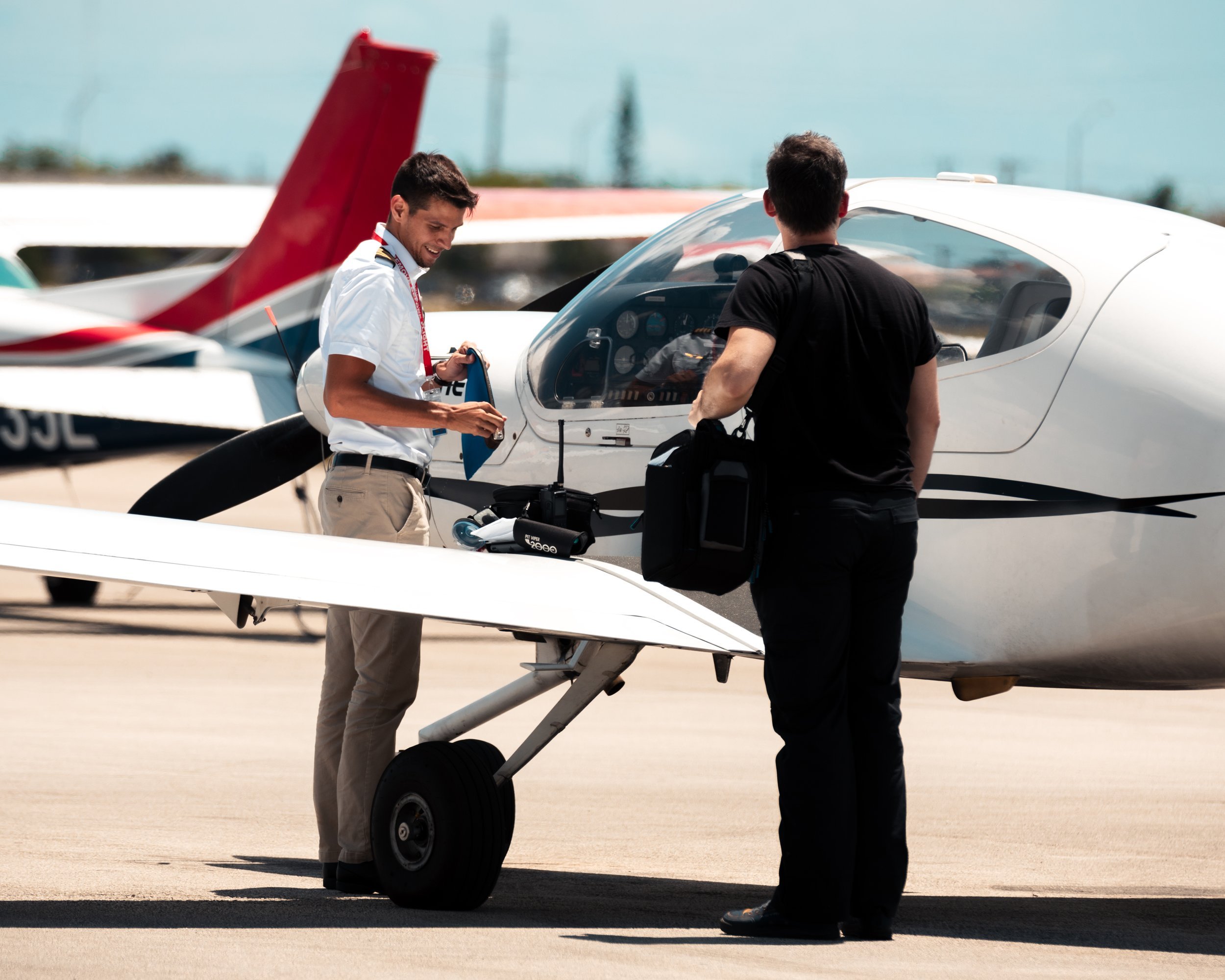The majority of students entering the industry really don’t understand the difference between part 141 or part 61. When we refer to part 141 or 61 we are referring to a section of 14 CFR Federal Aviation Regulations. Each part defines the way training must conducted, one verify specific and the other with more slack. I been lucky enough to experience both a part 141 and part 61 school. Below is a list of pros and cons and then we will dive in the details to help you make an informed decision.
| Pros | Cons |
|---|---|
| Structured Training | “Could seem more expensive” |
| More FAA Oversite | Stage Testing |
| Better Maintenance and Record Keeping | |
| Possible Lower Minimums | |
| School is Certificated by the FAA | |
| Instructors require Continuous Eucation and Training |
| Pros | Cons |
|---|---|
| Customizable to the Student | Usually No Structure |
| Could save money if an Outstanding Student |
Little oversight from FAA and School Management |
| Higher Requirements | |
| School is not Certificated |
Part 141 Detailed
Part 141 pilot schools are actually certificated flight schools by the Federal Aviation Administration (FAA). The must follow a structured and approved syllabus in the school operating manual. Because of the added oversight the FAA allows gradation with lower requirements (flight time). To receive and maintain their certification, schools must submit their operating procedures to the FAA for approval. Once approved the FAA conducts surveillance on the pilot school to verify they are in compliance and following their operations manual.

Student and instructor preflight our Diamond DA40 to begin a flight lesson.
What does all of this mean to the student, well you should be getting a better quality of education. At Aviator Zone we conduct flight training for all new candidates under part 141. If someone comes with prior experience then we enroll them part 61 if it makes sense. It’s more about looking at the specific case of the individual to offer the best option. For those new to aviation the decision is easy to make. Once other training has been done or a candidate is looking for another rating, then looking at the individuals case is required.
Instructors and the chief pilot of a certificated pilot school are required to conduct annual training to keep current. Instructors much take a check ride with the chief flight instructor to begin teaching a course, while the chief pilot must take a check ride with the FAA to act as the chief flight instructor for the schools approved courses. The entire team receives specific training for the schools policies prior to conducting training with students. More vetting and more training is always a good thing when it comes to selecting the person that is teaching you how to fly.
Cost of training is important and usually the way people choose a flight school, although it is not the best idea. Quite often students believe that they will save money by doing training part 61 since they won’t need any ground training. This is a common misconception, most of these student require extensive ground towards the end of their training to be able to prepare them for a check ride. Ending up with the same ground time as those graduating from a part 141 course. Testing is another deterrent, but the benefit of doing stage checks is that they are basically doing check-rides on the way to your goal. They prepare you to what a check-ride will feel and look like. You will be a lot better prepared for your examiner in the end, making the check-ride an enjoyable experience.
Part 61 Detailed
I personally did all my training part 61, since I started flying at the age of 12, part 141 was just not an option. Therefore part 61 was a great benefit for me. The school was not part 141 certified and was not able to obtain the certification. Since I also got to work there not only did I experience part 61 training but also lived it thru other students. Because of the flexibility of a 61 school, there are some benefits. For example let’s say you have all the requirements for a commercial pilot certificate because you have your own aircraft. Well if you wanted to do it part 141, you would need XXX HRS. If you do it 61 then you only need the 20 hours of training since you already time build the 250 total hours required. This is not the norm. It really comes down to the individual to determine which option is best. Commonly we sit with candidates and layout a road map for part 61 and 141 to make that decision. We always choose the best interest for the student and so should your flight school. They should have a valid reason why to go one vs the other.

Student and instructor return from a flight lesson and discuss lessons learned during the flight.
Part 61 “schools” are actually not school as far as the FAA is concerned. There is no certification process or licensing for part 61 schools. Meaning there is less FAA oversight, instructors are free to do as they wish as long as they meet the requirements for the certificate to be sought. Take that with a grain of salt.
Conclusion
Generally whether you do training part 141 or part 61, a part 141 certificated school is my recommendation. You know that there will be added benefits just for them having the certificate. So even if you decide with part 61 make sure your school is certificated.


.png?width=178&height=50&name=Aviator%20Zone%20Academy%20(5).png)
Submit a Comment